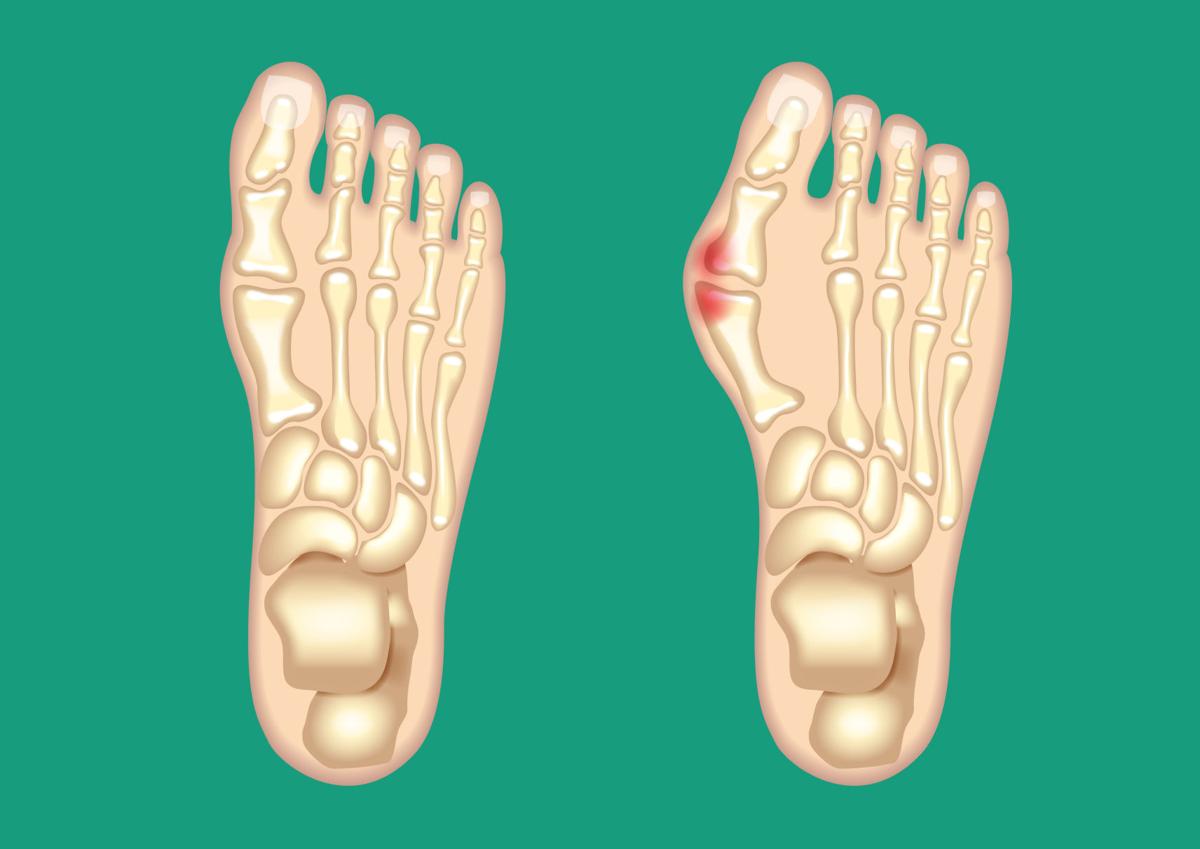What is bunion removal?
A bunion is a bony bump that forms at the base of your big toe, where it forms a union with a foot bone called the first metatarsal. Your big toe points excessively toward your second toe when you have a bunion. The bunion is a foot deformity that consists of both bone and soft tissue.
Bunions can be very painful. Wearing shoes that are too small or too narrow in the toe area is the most common cause of bunions. This can be thought of as a pressure-response effect. Women are more likely than men to develop bunions.
Bunion removal is a surgical procedure that corrects a deformed area of the foot near the big toe. Bunion removal is sometimes called a bunionectomy, bunion surgery, or hallux valgus correction. Hallux valgus is a Latin phrase that means “foot deformity.”
A bunion removal is necessary if nonsurgical treatment methods don’t relieve your pain.
Choosing bunion surgery
Many people get relief from bunion pain by wearing larger shoes with a wider toe box. For example, someone with a bunion might choose to wear athletic shoes instead of high heels for pain relief.
Cushioning bunions with protective pads also helps. People who experience pain even after making these lifestyle adjustments may choose bunion removal surgery as an effective treatment method.
These scenarios make you an ideal candidate for bunion surgery:
- Your pain restricts or prohibits you from completing everyday routines or activities.
- You can’t walk more than a few blocks without severe foot pain.
- Your big toe remains swollen and painful even with rest and medication.
- You can’t bend or straighten your big toe.
Discuss your condition with your doctor so they have complete information about your symptoms and limitations. Your doctor will take X-rays of your foot to diagnose the condition and to determine the kind of surgery needed to correct your specific problem.
Also Read : blackheads
More than 100 different types of bunion removal procedures exist to remove the bunion and to realign the big toe. The type of surgery you need depends on how your bunion developed and its current size.
Preparing for bunion removal surgery
You’ll need to undergo a few medical tests to check your overall health before scheduling bunion removal. Your doctor will:
- take an X-ray of your lungs
- perform an electrocardiogram to check your heart function
- test your urine and blood for any underlying illnesses
You may need to stop taking medications a few days before surgery, particularly if you take aspirin or other blood-thinning drugs.
Bunion removal surgery is usually an outpatient procedure. This means that you can go home a few hours after the operation and after the general anesthesia has worn off.
Your doctor will determine how long you should fast, or not eat or drink anything, before the surgery based on your surgery time. Follow their directions carefully to avoid possible complications.
Bunion surgery procedure
Many people don’t need a general anesthetic during bunion removal surgery. Instead, you’ll get a local anesthetic called an ankle block. An ankle block makes you numb below the ankle, but you’ll be awake for the surgery.
Once you’re completely numb, the surgeon will remove the bunion and make other repairs to your foot. Some of the most common types of bunion removal procedures are osteotomy, exostectomy, and arthrodesis.
- In an osteotomy, your surgeon will cut your big toe joint and realign it to a normal position.
- In an exostectomy, your surgeon will remove your bunion from the joint without performing an alignment.
- In an arthrodesis, your surgeon will replace the damaged joint with screws or metal plates to correct the deformity.
Your surgeon will bandage your foot after the surgery and take you to the recovery room. Your blood pressure and heart rate will be monitored as you wait for the anesthesia to wear off.
Generally, you can go home after a couple of hours in recovery.
Recovering from bunion surgery
While recovery after bunion surgery takes about six to eight weeks, full recovery from bunion removal surgery can take an average of four to six months.
For the first two weeks following your surgery, you’ll wear a surgical boot or cast to protect your foot. You should avoid getting your stitches wet.
After removing the cast or boot, you’ll wear a brace to support your foot while you heal. You won’t be able to bear weight on your foot at first, and you’ll need crutches for assistance. Gradually, you can start putting some weight on your foot, using a walker or crutches for support.
Keep off your feet as much as you can. Ice your foot and toe to speed healing and reduce inflammation. After a week or two, you can drive if necessary.
Expect your foot to remain swollen to some degree for several months after bunion removal. Wear shoes with ample room to minimize your pain. Women should try to avoid wearing high heels for at least six months after bunion removal.
Your doctor may send you to physical therapy, where you’ll learn exercises that can strengthen your foot and lower leg.
Long-term outlook
Bunion removal surgery is highly successful. Talk to your doctor about measures you can take to ensure your foot heals correctly. Taking care of your feet by avoiding shoes with narrow toe boxes after surgery will help prevent future bunions.

